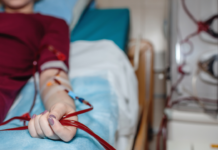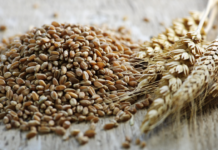Sponsored by: Renadyl™
Kidney stones, also known as renal calculi, are hard deposits that form in the kidneys due to the accumulation of minerals and salts. These stones can vary in size and shape, causing severe pain and discomfort. Understanding the causes, risk factors, treatment options, and preventive measures can help individuals better manage kidney stones and reduce the likelihood of future occurrences.
What are Kidney Stones?
Kidney stones are formed when certain substances, such as calcium, oxalate, and uric acid, become concentrated in the urine and crystallize. These crystals can gradually grow in size and form solid masses, leading to kidney stone development. The size of kidney stones can range from a grain of sand to larger, more painful stones.
Risk Factors:
Several factors can increase the risk of developing kidney stones. These include:
1. Dehydration: Insufficient fluid intake can lead to concentrated urine, increasing the likelihood of stone formation.
2. Family history: Individuals with a family history of kidney stones are more prone to developing them.
3. Diet: Consuming a diet high in sodium, protein, and oxalate-rich foods (such as spinach, rhubarb, and chocolate) can contribute to stone formation.
4. Obesity: Being overweight or obese can increase the risk of kidney stones.
5. Certain medical conditions: Conditions like urinary tract infections, kidney diseases, and metabolic disorders can increase the likelihood of stone formation.
6. Medications: Some medications, such as diuretics or calcium-based antacids, can increase the risk of kidney stones.
Treatment Options:
The treatment of kidney stones depends on their size, location, and the severity of symptoms. Common treatment options include:
1. Drinking plenty of fluids: Increasing fluid intake helps to flush out the stones and prevent their formation.
2. Pain management: Over-the-counter pain relievers can help alleviate the discomfort associated with kidney stones.
3. Medications: Depending on the type of stone, medications may be prescribed to help dissolve or prevent the formation of stones.
4. Extracorporeal Shock Wave Lithotripsy (ESWL): This non-invasive procedure uses sound waves to break the stones into smaller pieces, making them easier to pass.
5. Ureteroscopy: A thin tube with a camera is inserted into the ureter to locate and remove the stone or break it into smaller pieces.
6. Percutaneous Nephrolithotomy (PCNL): This surgical procedure involves removing larger stones through a small incision in the back.
Prevention:
Taking preventive measures can significantly reduce the risk of developing kidney stones. Here are some effective strategies:
1. Hydration: Drink plenty of fluids, especially water, to maintain proper urine dilution and prevent stone formation.
2. Diet modifications: Reduce sodium and oxalate-rich foods, while increasing the intake of fruits, vegetables, and whole grains.
3. Limit animal protein: Excessive consumption of animal protein can increase the risk of stone formation. Moderation is key.
4. Maintain a healthy weight: Adopting a balanced diet and regular exercise routine can help manage weight and reduce the risk of kidney stones.
5. Medication review: If you are on medications that increase the risk of stones, consult your healthcare provider for possible alternatives or adjustments.
Kidney stones can cause significant pain and discomfort, but with proper understanding, treatment, and preventive measures, individuals can effectively manage this condition. By adopting a healthy lifestyle, staying hydrated, and making dietary modifications, the risk of kidney stone formation can be minimized. If symptoms persist or worsen, it is crucial to seek medical attention promptly to prevent complications and ensure appropriate treatment.
Learn more about our sponsor Renadyl here https://bit.ly/3sZDWbb
About the author
Steven Belcher, RN, MSN, MS, is a dedicated kidney advocate who began his journey 20 years ago as a dialysis nurse. This job inspired him to help as many people with kidney disease as he could. Not only did he spend two decades caring for a patient’s physical and emotional needs in a clinical setting, but he also educated the public on the risk factors of kidney disease. Some of his many philanthropic successes include being a keynote speaker at the National Association of Nephrology Technicians/ Technologists (NANT), presenting at community spaces, and launching radio shows.
He now focuses his time entirely on his organization Urban Kidney Alliance, which educates the public about kidney disease. His goal? To lower rates of Chronic Kidney Disease in urban communities in Baltimore, Maryland, across the country, and globally through education and collaboration.
Steve has also written the book “HOW TO SURVIVE OUTPATIENT HEMODIALYSIS: A GUIDE FOR PATIENTS WITH KIDNEY FAILURE.” You can read the book review here.
*These statements have not been evaluated by the US Food and Drug Administration. This information is not intended to diagnose, treat, cure, or prevent any disease. Always consult with a qualified healthcare professional prior to beginning any diet or exercise program or taking any dietary supplement. The content on our website is for informational and educational purposes only.




